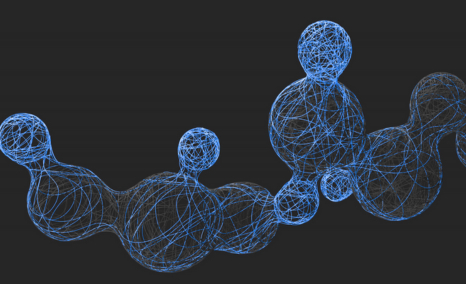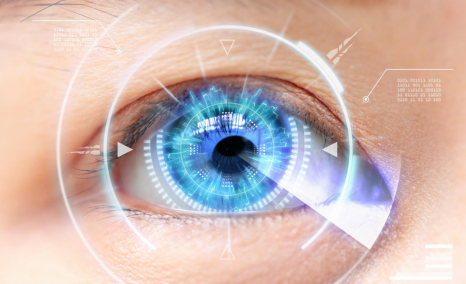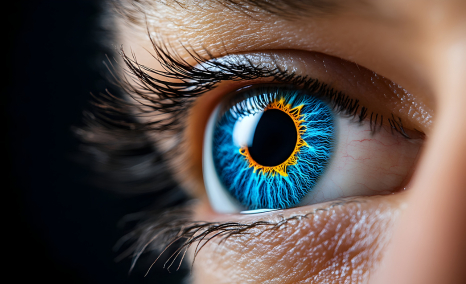Exploring the Growing Demand and Evolving Market Dynamics of Artificial Tears
Dec 20, 2023
Table of Contents
The landscape of technology has indelibly reshaped various industries, and the healthcare sector stands as a prime beneficiary, especially evident in the profound innovation and intense development seen in the Artificial Tears Market in recent years. The advancements in nanotechnology, biotechnology, and material sciences, have witnessed an exponential surge in growth, which ultimately led to a significant shift in the Artificial Tears products development. Artificial Tears, a crucial remedy for dry eye syndrome and ocular disorders, have undergone a transformative evolution, mirroring the relentless march of technology. Novel formulations incorporating bioengineered components, such as hyaluronic acid, electrolytes, and lipid-based nanocarriers, have significantly enhanced the efficacy and longevity of relief offered by Artificial Tears. Moreover, the advent of wearable devices and smart technologies has also led to the development of innovative delivery systems, allowing for personalized and controlled administration, thereby augmenting patient compliance and outcomes.
As per the latest assessment by DelveInsith, the global Artificial Tears Market is estimated to grow at a CAGR of 5.1% during the forecast period from 2023 to 2028. This paradigm shift in the Artificial Tears technology market has not only alleviated the burden of millions afflicted by ocular discomfort but has also catered to the burgeoning demand spurred by various factors. Lifestyle changes, increased screen time, environmental pollutants, and an aging population have all contributed to the escalating incidence of dry eye syndrome. Consequently, the market has responded by diversifying its offerings and introducing specialized formulations tailored for different severities and underlying causes of ocular ailments. Additionally, the expansion of e-commerce platforms has facilitated wider accessibility and affordability, ensuring that these solutions reach a broader spectrum of individuals, transcending geographical barriers and socioeconomic constraints.
Downloads
Click Here To Get the Article in PDF
Recent Articles
- Alcon Gains CE Mark for Clareon Vivity IOL in Europe; MicroPort MedBot’s Toumai SP Robot Wins NMP...
- How is Vision Care Market Growing With the Ongoing Innovation in the Product Development?
- Cerner, Scanwell Health and Personal Genome Diagnostics Acquisition; Zynex’s Fluid Monitori...
- Integra to Buy J&J’s Acclarent; B. Braun Launches the CARESITE Micro Luer Access Devic; FDA ...
- Dry Eye Disease Treatment: A Growing Space with Expanding Therapeutic Options
What are the Key Benefits of Artificial Tears?
The key benefits of Artificial Tears transcend mere relief from dryness; they encompass a multifaceted spectrum of advantages that significantly enhance ocular health and comfort. Firstly, these solutions effectively mimic the composition of natural tears, providing essential lubrication and moisture to the ocular surface, thereby reducing irritation, discomfort, and the sensation of dryness. Moreover, Artificial Tears aid in maintaining the stability of the tear film, crucial for preserving visual acuity and protecting the delicate corneal and conjunctival tissues. Beyond symptomatic relief, these solutions facilitate the restoration of ocular homeostasis, supporting the healing of minor corneal abrasions and protecting against potential infections.
Additionally, certain formulations boasting advanced components such as hyaluronic acid, lipids, and electrolytes offer prolonged relief, ensuring sustained hydration and comfort for extended periods. Their versatility extends to various specialized formulations catering to specific needs, such as preservative-free options for sensitive eyes or lipid-based formulations for those with evaporative dry eyes. The convenience of over-the-counter availability and the ability to integrate seamlessly into daily routines further accentuate the accessibility and usability of Artificial Tears, enhancing compliance and ensuring consistent ocular care. Overall, the key benefits of Artificial Tears lie not only in their immediate relief but also in their multifunctional role in promoting ocular health, comfort, and overall well-being.
What are the Major Applications of Artificial Tears?
Artificial Tears, versatile in their applications, serve as indispensable tools in addressing a spectrum of ocular conditions and discomforts. Primarily designed to alleviate the symptoms of dry eye syndrome, these solutions find widespread use in managing various forms of ocular surface disorders caused by environmental factors, aging, medications, or underlying health conditions. Beyond mere lubrication, these applications extend to providing relief from itching, burning, and foreign body sensations, offering a soothing and protective layer over the delicate ocular surface.
Additionally, Artificial Tears play a crucial role in pre- and post-operative care for individuals undergoing ocular surgeries, aiding in the healing process and minimizing complications. Contact lens wearers also benefit from specialized Artificial Tears formulations that enhance comfort and alleviate dryness associated with lens use. Moreover, their utility in alleviating discomfort due to prolonged screen time or exposure to harsh environmental conditions underscores their relevance in our modern, digitally-driven lifestyles. The multifaceted applications of Artificial Tears, ranging from therapeutic to preventative, highlight their pivotal role in maintaining ocular health and enhancing the quality of life for individuals facing diverse eye-related challenges.
What are the Major Artificial Tears Products Types Available in the Market?
Artificial Tears, encompassing various formulations like cellulose-derived tears, glycerin-derived tears, and those based on polyethylene glycol and propylene glycol, represent a diverse array of ocular solutions tailored to alleviate the discomfort of dry eye syndrome and other ocular surface disorders. Cellulose-derived tears, often incorporating hydroxyethyl cellulose or carboxymethyl cellulose, mimic the natural tear film’s viscosity, providing prolonged lubrication and moisture to the eyes. These formulations act as effective substitutes, restoring the tear film’s stability and reducing irritation caused by insufficient moisture. Glycerin-derived tears, harnessing the hydrating properties of glycerin, offer a dual benefit of lubrication and hydration, alleviating dryness and soothing the ocular surface. Their ability to retain moisture makes them particularly beneficial for individuals with evaporative dry eyes.
Polyethylene glycol and propylene glycol-based tears, known for their lubricating properties, create a protective barrier over the eye’s surface, reducing friction and discomfort. These formulations, often free of preservatives, cater to sensitive eyes and are well-suited for individuals prone to adverse reactions from certain additives. Additionally, they boast longer ocular residence times, ensuring sustained relief for those grappling with chronic dryness.
Apart from these primary categories, the Artificial Tears market offers a multitude of other innovative products. Lipid-based tears, containing natural oils to stabilize the tear film and prevent evaporation, represent a cutting-edge approach to managing dry eye symptoms, especially in cases related to lipid deficiency. Nanotechnology-infused tears, featuring nano-sized particles for enhanced penetration and prolonged action, exemplify the fusion of advanced science into ocular care. Furthermore, preservative-free formulations continue to gain traction, addressing concerns about potential side effects and catering to individuals with heightened sensitivity.
As per the latest assessment by DelveInsight, in the product segment of the artificial tears market, the polyethylene glycol and propylene glycol-based tears category is expected to amass significant revenue share in the upcoming years owing to the various advantages offered by the polyethylene glycol and propylene glycol-based tears products. Moreover, the increasing product launches and approvals will also certainly impact the demand for polyethylene glycol and propylene glycol-based artificial tears.
Artificial Tears Market Dynamics and Trends Analysis
The surge in the incidence of dry eye syndrome stands as the primary catalyst propelling the growth of the Artificial Tears market. Based on the most recent data, approximately 344 million individuals globally are affected by dry eye disease (DED), with its prevalence expanding across various age groups, encompassing both younger and older adults. This underscores the critical need for clinicians to determine the most effective treatment approaches to address this escalating concern. This growing prevalence of dry eye disease is fueled by a myriad of factors, including, but not limited to lifestyle changes characterized by extensive screen usage, environmental pollutants, an aging demographic, and underlying health conditions. As these elements intertwine, the demand for effective ocular surface disorder treatments, specifically Artificial Tears, intensifies.
Additionally, emerging research underscores the association between dry eye syndrome and various systemic diseases, further elevating the significance of addressing this condition. This multifaceted increase in dry eye cases not only highlights the immediate need for relief but also underscores the imperative for ongoing innovation and advancement within the Artificial Tears market to meet the evolving demands of a diverse and expanding patient population. Moreover, the rise in screen time contributes to diminished eye moisture levels, resulting in dryness, a condition that can be effectively managed through the application of Artificial Tears. Consequently, prolonged screen exposure often culminates in reduced eye moisture, leading to the onset of dry eye symptoms, which can be alleviated by the use of lubricating eye drops or Artificial Tears.
The rising awareness surrounding dry eye syndrome, coupled with proactive governmental initiatives, is poised to create substantial opportunities within the Artificial Tears market. Furthermore, the escalating demand for contact lenses is anticipated to drive the Artificial Tears market, given that prolonged contact lens use often contributes to diminished eye moisture, consequently heightening the need for products like Artificial Tears that serve as effective lubricating agents for ocular comfort and health. This convergence of factors highlights a significant avenue for market growth, where increased awareness of ocular health and evolving usage patterns of contact lenses intersect to elevate the demand for solutions addressing dryness and discomfort in the eyes.
Consequently, the substantial presence of numerous products in the developmental pipeline stands as a significant factor that promises a lucrative opportunity for the expansion of the Artificial Tears market. This robust pipeline, characterized by ongoing research and development efforts, heralds the advent of novel formulations, advanced delivery systems, and innovative therapeutic approaches. These forthcoming products not only aim to address the existing gaps in treatment options but also seek to cater to diverse patient needs, offering enhanced efficacy, prolonged relief, and improved ocular health outcomes.
Despite the benefits of Artificial Tears, impediments to market growth persist, notably the concerns surrounding potential contamination and adverse reactions linked to preservatives within these products. Additionally, the market faces challenges arising from the availability of alternative treatment modalities and other factors that could potentially limit its expansion. These alternative options encompass a spectrum of therapies, including but not limited to novel ocular surface treatments, advanced therapies involving regenerative medicine, and emerging technologies such as contact lens-based solutions or ophthalmic surgical interventions. Moreover, evolving consumer preferences, increased awareness of potential side effects, and the pursuit of more personalized therapeutic approaches could contribute to market constraints for Artificial Tears. These multifaceted challenges underscore the necessity for ongoing research, technological advancements, and the development of preservative-free formulations to mitigate these concerns and ensure sustained market growth.
Artificial Tears Companies Operating in the Market
Artificial Tears companies in the market play a pivotal role, serving as the vanguards of innovation, accessibility, and sustainability in addressing various challenges in the eye care market. These enterprises, ranging from pharmaceutical and MedTech giants to biotech startups, are at the forefront of research and development, tirelessly pushing the boundaries of technology to create advanced formulations that cater to diverse patient needs. Some of the leading Artificial Tears companies in the market include Santen Pharmaceutical Co., Ltd., Bausch & Lomb, AbbVie, Johnson & Johnson Vision Care, Abbott, Medicom Healthcare Ltd., Similasan Corporation, URSAPHARM INDIA Pvt. Ltd, Alcon Inc., Sun Pharmaceutical Industries, Inc., AFT Pharmaceuticals, Akorn Operating Company LLC, Hilco Vision, Entod Research Cell UK Ltd., OASIS Medical, Inc., and others. Companies are actively investing in scientific endeavors, conducting rigorous studies to identify novel compounds, delivery systems, and therapeutic approaches that enhance the efficacy and durability of Artificial Tears solutions.

Moreover, these companies are instrumental in streamlining manufacturing processes, ensuring quality control, and adhering to stringent regulatory standards, thereby guaranteeing the safety and reliability of their products. Additionally, their marketing and distribution strategies are instrumental in bridging the gap between supply and demand, leveraging digital platforms and strategic partnerships to make Artificial Tears widely accessible to consumers worldwide.
Major Developmental Activities Shaping the Artificial Tears Market Outlook
- In December 2023, Johnson & Johnson Vision Care started a phase II clinical trial for the evaluation of multidose preservative-free lubricating eye drops contained in Novelia® Eye Dropper in non-contact lens-wearing patients.
- In January 2022, Alcon announced the European launch of the newest addition to its innovative portfolio of dry eye products, Systane Complete Preservative-Free Lubricant Eye Drops, now in an easy-to-use, multi-dose bottle. Systane is the leading global Artificial Tears brand.
- In February 2020, I-MED Pharma Inc. launched its newest, most advanced addition to its I-DROP Artificial Tears line, called I-DROP®MGD.
- In October 2019, Allergan plc launched three new over-the-counter (OTC) REFRESH RELIEVA products: REFRESH RELIEVA, REFRESH RELIEVA PF (preservative-free) multidose, and REFRESH RELIEVA for contacts. This new line of Artificial Tears formulations available in preserved, preservative-free multidose, and a formula designed for contact lens wearers, are specially formulated to relieve discomfort due to eye dryness and to prevent further irritation.
Artificial Tears Market: Future Outlook and Key Perspective
The future outlook for the Artificial Tears Market appears promising and poised for continued growth, driven by several factors that indicate sustained innovation, expanding demand, and a focus on addressing unmet needs in the ocular health market. Foremost among these factors is the increasing prevalence of dry eye syndrome worldwide, attributed to lifestyle changes, prolonged screen time, aging populations, and environmental factors. This trend is expected to continue, driving the demand for Artificial Tears solutions. Additionally, advancements in technology and biopharmaceutical research are anticipated to fuel the development of more sophisticated formulations, leveraging nanotechnology, regenerative medicine, and personalized therapies to enhance efficacy and address specific patient profiles.
The market’s future also holds the promise of novel ocular delivery systems that optimize dosing, increase bioavailability, and improve patient compliance. Smart technologies and wearable devices are likely to play a significant role in this regard, offering precise and controlled administration of Artificial Tears while providing real-time monitoring of ocular health parameters. Furthermore, there is a growing emphasis on eco-friendly and sustainable formulations, reflecting a broader societal shift toward environmentally responsible products.
Regulatory initiatives aimed at streamlining approval processes and ensuring the safety and efficacy of ocular products are expected to foster a conducive environment for market growth. Moreover, the increasing focus on telemedicine and remote healthcare services could expand the reach of Artificial Tears products to underserved populations, thereby broadening the market’s footprint.
In summary, the Artificial Tears Market’s future outlook appears dynamic, characterized by continuous innovation, technological advancements, increased accessibility, and a growing awareness of ocular health. As these trends converge, the market is poised to not only meet the rising demand for ocular surface disorder treatments but also to exceed expectations in delivering effective, personalized, and sustainable solutions to improve the quality of life for individuals affected by such conditions.

Downloads
Article in PDF
Recent Articles
- Dry Eye Disease Treatment: A Growing Space with Expanding Therapeutic Options
- Integra to Buy J&J’s Acclarent; B. Braun Launches the CARESITE Micro Luer Access Devic; FDA ...
- How is Vision Care Market Growing With the Ongoing Innovation in the Product Development?
- Upcoming Contenders in Dry Eye Disease Drug Space: 5 Therapies to Watch Post-TRYPTYR Approval
- FDA Expands SOLIRIS for Pediatric Myasthenia Gravis; vTv’s Cadisegliatin Program Resumes as FDA L...



